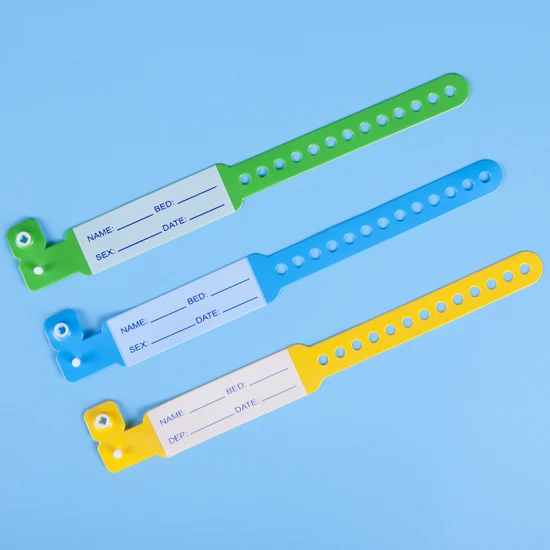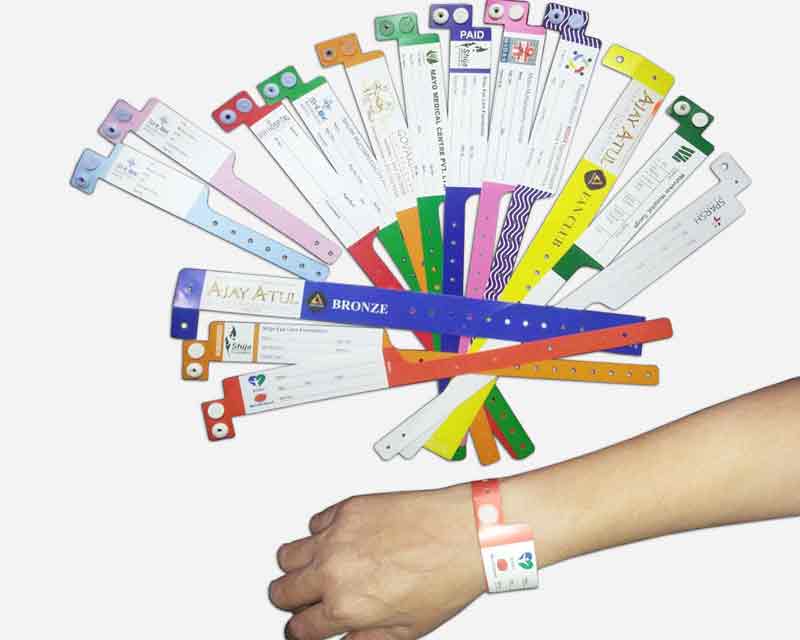The Value of Using a Patient Identification Band in Modern Medical Practices
The Value of Using a Patient Identification Band in Modern Medical Practices
Blog Article
Checking Out the Numerous Sorts Of Patient Identification Band Made Use Of in Clinical Facilities
In the complex world of health care, the essential duty of Patient Identification bands commonly goes unnoticed. These bands, differing from easy paper wristbands to advanced RFID bands, create the backbone of Patient safety protocols, guaranteeing accuracy in Patient Identification. The huge variety of these bands, each with its unique benefits and restrictions, is frequently ignored. As we browse via this topic, one may acquire understanding right into the subtle intricacies and essential significance of such bands in clinical facilities.
Understanding the Significance of Patient Identification Bands
While they may look like mere devices, Patient Identification bands play an important duty in medical centers. These bands work as a crucial device for validating Patient identification, preventing clinical mistakes connected to misidentification. The bands usually show essential details such as the Patient's name, age, blood type, and any known allergies. They enable medical care experts to rapidly access this important info, thereby facilitating prompt and accurate medical treatment. Patient Identification bands likewise aid in enhancing management tasks, making certain exact record-keeping and invoicing. Despite their simplicity, these bands symbolize the principle of Patient safety, a keystone of quality healthcare. Without them, the danger of clinical errors, and as a result, Patient harm, could substantially increase.
Typical Paper Wristbands: Their Use and Limitations
Traditional paper wristbands have been a staple in Patient Identification throughout numerous clinical facilities. While their usage prevails, they nurture certain limitations that might impact their performance in Patient management. This section will certainly concentrate on the range of their application and the fundamental drawbacks connected with their usage.
Paper Wristbands: Use Range
In the realm of Patient Identification, paper wristbands have long held a vital duty. These bands are usually made use of in outpatient setups, where the Patient's stay is short-lived. The wristbands have important information such as the Patient's name, date of birth, and an one-of-a-kind Identification number. This simple, yet reliable system, enables physician to quickly and properly recognize individuals, guaranteeing the right treatment is carried out. Paper wristbands are also utilized in emergency situation circumstances, where quick Identification is vital. Their usage encompasses events like blood contribution drives and mass vaccination programs, additionally highlighting their convenience. Regardless of innovations in technology, the modest paper wristband continues to be a cost-effective and trustworthy option for Patient Identification in different health care situations.
Limitations of Paper Wristbands
Despite their widespread usage, paper wristbands are not without their downsides. In enhancement, paper wristbands often do not have the technological capacities of even more modern-day choices, such as barcoding or RFID chips, limiting their functionality to merely showing created information. Paper wristbands can cause pain or skin inflammation to some clients, especially when put on for extended periods.
Barcoded Wristbands: Improvements in Patient Identification
While Patient Identification has actually long been an important facet of medical care, the development of barcoded wristbands signifies a considerable leap forward. These bands take advantage of the simplicity of barcoding innovation, permitting for Patient information to be promptly checked and accessed. They enhance the speed and precision of Patient Identification, reducing the risk of medical mistakes connected to misidentification. Barcoded wristbands are cost-efficient, easy to create, and remove handwriting mistakes usual with manual systems. Nonetheless, they are not without restrictions. While they offer enhancements over standard bands, the barcode can become used or smudged, making it unreadable. Regardless of this, barcoded wristbands continue to be a vital tool in modern-day health care setups, symbolizing the crossway of technology and Patient treatment.
Radio Regularity Identification (RFID) Bands: an Action Towards Futuristic Health Care
The advancement of Patient Identification bands has brought about the appearance of Radio Frequency Identification (RFID) Bands (patient identification band). These cutting-edge gadgets present crucial benefits for health care facilities, offering an extra efficient and highly progressed means of Patient Identification. The application of RFID in healthcare is a significant action in the direction of a much more advanced approach to Patient administration and security
Comprehending RFID Bands

RFID Bands: Key Advantages
Accepting a future where modern technology and medical care merge, radio frequency Identification bands offer several key benefits. Largely, these bands enhance Patient security by offering accurate, instant Identification, thereby decreasing clinical errors. RFID bands can keep a huge amount of Patient information, including case history and allergic reactions, allowing individualized treatment. They additionally enhance administrative jobs, as the automated information entrance changes manual processes, enhancing efficiency and reducing paperwork. Moreover, RFID bands offer real-time monitoring of patients, important in high-risk environments such as surgical procedure or extensive care. Finally, these bands are sturdy and resistant to ecological factors, making sure constant capability. Generally, RFID bands stand for a significant development in Patient Identification innovation, profiting both clients and doctor.
Executing RFID in Healthcare
As we enter a technologically innovative age, the application of RFID bands in medical care becomes progressively important. These bands supply a smooth way to track and recognize people, guaranteeing their security and enhancing effectiveness in treatment procedures. RFID bands provide countless benefits over typical Identification methods. They can keep a vast amount of data, including the Patient's medical history and therapy plans, which can be easily accessed by doctor. This data helps doctors make educated choices relating to the Patient's therapy strategy. RFID bands decrease medical errors by supplying exact Patient Identification, which is crucial in preventing misdiagnosis or wrong medicine management. Therefore, the implementation of RFID bands is a considerable step in the direction of boosting Patient safety and security use this link and medical care delivery.

Color-Coded Wristbands: Helping in Quick and Accurate Diagnosis
In the busy setting of a medical center, color-coded wristbands have arised as crucial tools for swift and specific Identification of an individual's clinical problem. These wristbands, used by individuals, lug details colors that represent various clinical conditions or conditions. As an example, red can suggest allergy dangers, while yellow could symbolize an autumn threat. This system is made to supply instant visual hints to doctor, enhancing Patient safety and security and care top quality. In emergency situation situations, making use of these wristbands permits quick decision-making. The performance of color-coded wristbands depends on the uniformity of shade interpretation throughout healthcare establishments, needing common criteria for consistent application.
Methods for Effective Execution and Monitoring of Patient ID Bands
Accomplishing optimum usage of Patient Identification bands demands a well-structured approach for their execution and management. Patient education and learning is likewise important; patients should recognize the function of the bands and the need for their constant wear. It's important to have a back-up plan in area, such as barcode scanning or biometrics, to ensure that Patient Identification is never ever endangered.
Conclusion
Patient Identification bands are critical in clinical facilities to make sure safety and security and precision. Efficient application and monitoring of these bands can dramatically lower medical errors, improve performance, and boost total Patient care.
These bands, differing from straightforward paper wristbands to innovative RFID bands, form the foundation of Patient safety protocols, guaranteeing precision in Patient Identification.The development of Patient Identification bands has actually brought regarding the appearance of Radio Frequency Identification (RFID) Bands. Overall, RFID bands represent a considerable advancement in Patient Identification technology, profiting both clients and health care providers.
RFID bands reduce medical mistakes by giving exact Patient Identification, which is important in protecting against misdiagnosis or wrong medicine management. Patient education and learning is additionally critical; Visit Website patients must comprehend the function of the bands and the need for their continuous wear.
Report this page